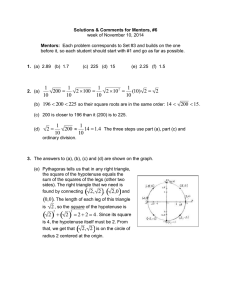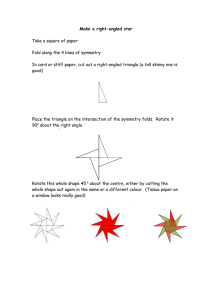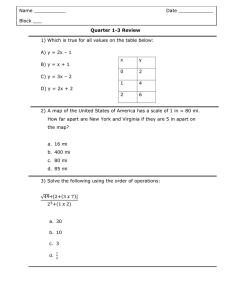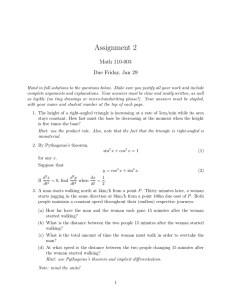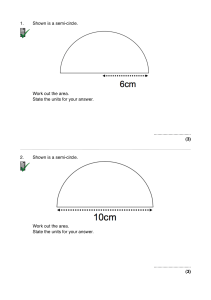Solution to problem 1
advertisement
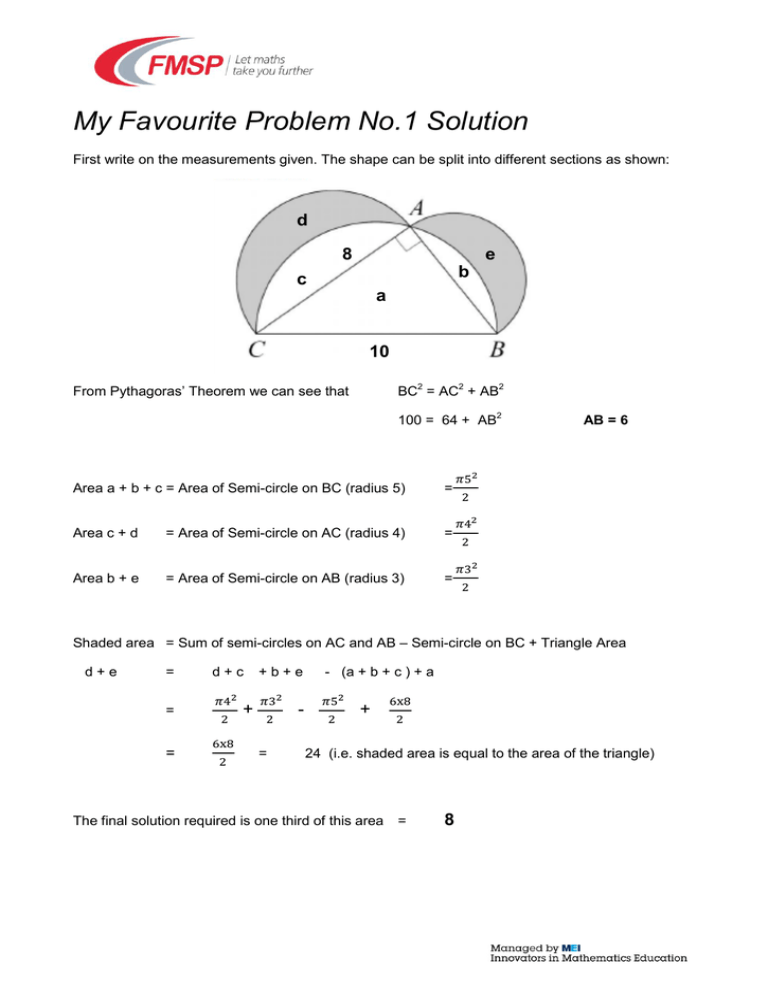
My Favourite Problem No.1 Solution First write on the measurements given. The shape can be split into different sections as shown: d 8 e b c a 10 BC2 = AC2 + AB2 From Pythagoras’ Theorem we can see that 100 = 64 + AB2 Area a + b + c = Area of Semi-circle on BC (radius 5) = Area c + d = Area of Semi-circle on AC (radius 4) = Area b + e = Area of Semi-circle on AB (radius 3) = AB = 6 Shaded area = Sum of semi-circles on AC and AB – Semi-circle on BC + Triangle Area d+e = = = d+c +b+e + = - (a + b + c ) + a + 24 (i.e. shaded area is equal to the area of the triangle) The final solution required is one third of this area = 8 Surprisingly you do not need to calculate the areas of the semi-circles as we can extend the use of Pythagoras’ Theorem for other shapes on the three sides of a right-angled triangle. Triangle ABC is a right-angled triangle, so the sum of the areas of the two smaller semi-circles is equal to the area of the larger semi-circle on the hypotenuse BC. Consider a right- angled triangle of sides a, b and c. Then from Pythagoras’ Theorem we have that the square on the hypotenuse is equal to c the sum of the squares on the other two sides. Now if you multiply both sides by a b , this gives c . which rearranges to a b This can be interpreted as the area of the semi-circle on the hypotenuse is equal to the sum of the areas of the semi-circles on the other two sides. In the problem there was a right-angled triangle and three semi-circles. By reflecting the semi-circle on BC about BC we can see by Pythagoras’ Theorem that the areas a + b + c = c + d + b + e. d e d b c e a b c a a+b+c Therefore a=d+e . So the area of the right-angled triangle equals the shaded areas. Further Investigation The shaded shapes in the problem are called lunes. A lune is a concave shape formed by two circular arcs and appears like a crescent moon. Hippocrates of Chios (470 – 410 B.C.) was a Greek mathematician who was one of the first to use geometry to calculate the area of lunes. The process of constructing square shapes of equal area to other shapes using only straight-edge and compasses is known as quadrature. Hippocrates thought he had a method for squaring the circle but it turned out to be false. It has since been proved to be impossible to construct such a square using straight-edge and compasses. You might like to investigate this topic further by visiting: http://www.cut-the-knot.org/Curriculum/Geometry/PythagoreanLune.shtml http://www.ms.uky.edu/~corso/teaching/math330/Hippocrates.pdf
